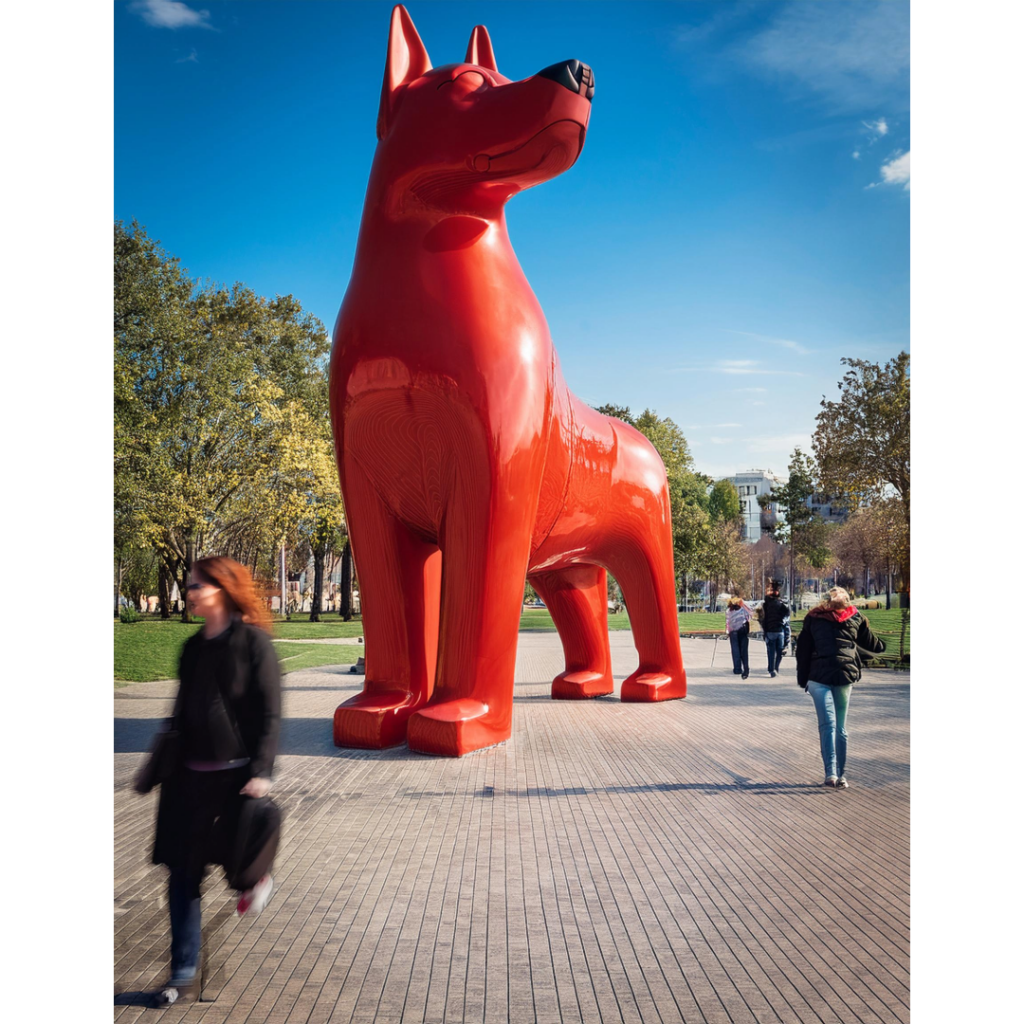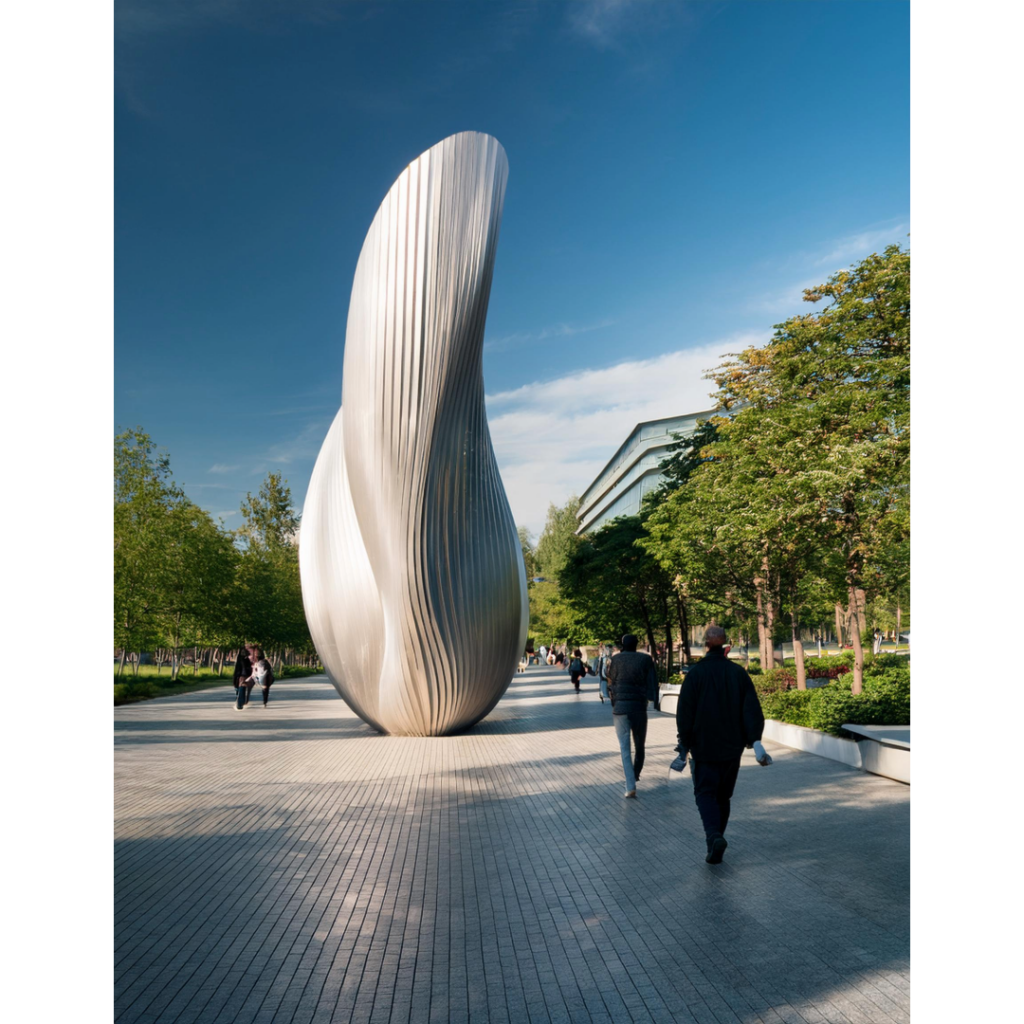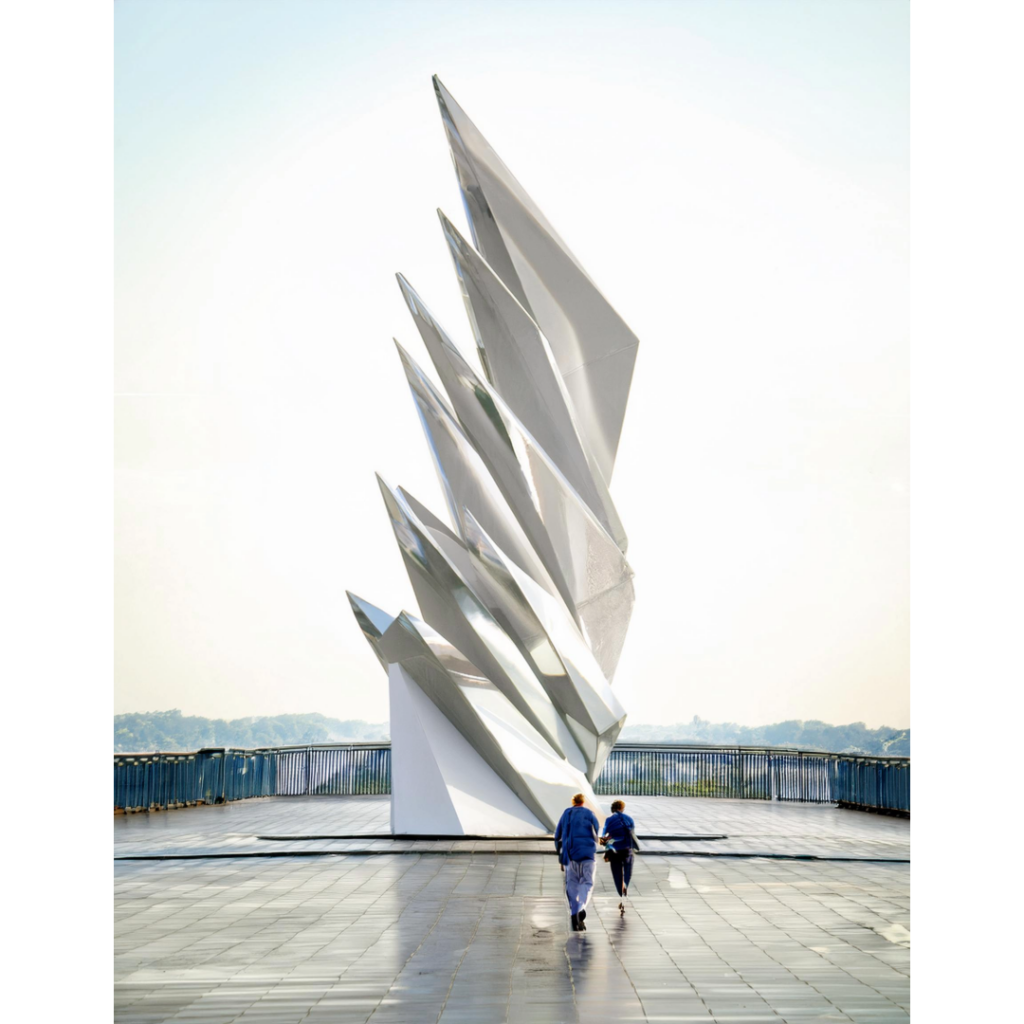Public Art
Urban park art is crucial because it significantly enhances the beauty and appeal of green spaces, transforming parks into more vibrant, welcoming environments for everyone. By adding artistic elements, parks become much more than just places for recreation; they turn into dynamic cultural hubs that attract a diverse range of visitors. Art in urban parks serves as a powerful tool to engage the public, creating focal points that draw people in and encourage them to stop, reflect, and interact. These installations, whether sculptures, murals, or temporary exhibits, help make green spaces more interesting and enjoyable, adding an extra layer of meaning to the natural beauty of the surroundings.

Art in public parks also fosters social interaction and a sense of community. It provides shared experiences that people can connect over, whether they are admiring a piece together or using it as a conversation starter. This helps build relationships and a sense of belonging, making parks feel more like communal spaces where individuals and families can bond, relax, and enjoy their surroundings. The presence of art can turn a park into a vibrant meeting spot where creativity and community intersect, creating a more inclusive environment for all.
Moreover, public art in parks can provoke thought, challenge perceptions, and spark important conversations. Many artworks in public spaces tackle social, environmental, or historical themes that encourage reflection and dialogue among park visitors. Whether it’s a piece that highlights local culture, addresses social issues, or presents a thought-provoking concept, art in parks can enrich the cultural experience of the area, making the park more than just a recreational space—it becomes an educational and thought-provoking destination. This kind of art can shape the identity of a neighborhood, telling the stories of its people and history, and even pushing the boundaries of what is traditionally considered «art.»

Additionally, encountering art in park settings has a positive impact on mental health and well-being. Parks already provide a natural refuge from the chaos of urban life, but the inclusion of art takes this experience to another level. It can uplift the spirits, inspire creativity, and provide a welcome escape from the daily grind. Art has the power to evoke emotions and create a sense of tranquility, allowing visitors to disconnect from the pressures of work or city life. The mere presence of art can help reduce stress, promoting relaxation and enhancing the overall well-being of city residents. Public art in parks contributes to a healthier, more balanced lifestyle by offering individuals a space to reflect, rejuvenate, and experience beauty in an otherwise bustling urban environment.
In conclusion, urban park art plays an essential role in enriching the urban experience. It transforms public parks into spaces of creativity, connection, and cultural enrichment. Not only does it improve the aesthetic value of green spaces, but it also fosters a sense of community, provokes meaningful conversations, and supports mental health and well-being. As cities continue to grow, integrating art into urban parks will remain a vital component of creating spaces that are not only functional but also deeply inspiring and supportive of community life.»
